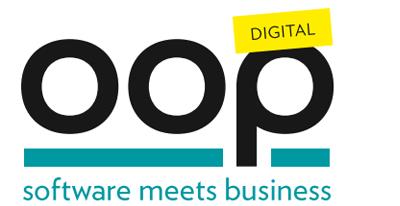Please note:
On this page you will only see the English-language presentations of the conference. You can find all conference sessions, including the German speaking ones, here.
The times given in the conference program of OOP 2023 Digital correspond to Central European Time (CET).
By clicking on "VORTRAG MERKEN" within the lecture descriptions you can arrange your own schedule. You can view your schedule at any time using the icon in the upper right corner.
Thema: Cloud
- Dienstag
07.02. - Mittwoch
08.02. - Donnerstag
09.02.
Re-purchasing an application is seen as the top of craftsmanship for cloud migrations. But people have rarely seen such a project in practice. This is the courageous journey of a real consumer product running on expensive infrastructure for years with 2 million active users and more than 6PB of data.
The talk takes you on a journey to a German public cloud and shares all the learnings - about shifting massive data, about terraforming infrastructures, about customizing open source and about all…
I will share our hands-on experience with a cloud native (container) transformation that is currently unfolding. Technically, implementing an Open Shift Container Platform (bare metal) is pretty challenging. Doing this in a way that we will have pretty stuff in our data centers and at the same time making sure that our technical possibilities are actually being used effectively by product developers ... is a different challenge all together.
Join this session if you'd like to hear what we…
Firmen können kaum noch IT-Systeme neu entwickeln, ohne dass existierende Funktionalität mitwandert. Vor die Aufgabe gestellt, ein System von einem Fremdanbieter in eine Public Cloud zu überführen, hat sich gezeigt, dass hilfreiche Wanderführer rar sind.
Diese Session strukturiert Entscheidungswege und Erkenntnisse bei Cloud-basierten Migrationsvorhaben - abgeleitet aus der Migration und Modernisierung von einem Konsumenten-Service mit 6 PB Daten und ca. 2 Mio. Nutzern.
Zielpublikum:…
Modernization projects are not a straight line as there’s no one-stop shop. Balance is definitely the right word: we talk here about finding the proper trade-off between quality/costs/timeframe requirements and customized patterns for a successful legacy system modernization. Based on actual use cases, we’ll discuss the available solutions (ERP implementation, code rewriting, middleware, cloud…), and see why combining the relevant tools is key.
Let us take you on a modernization journey and get…
The cloud has fundamentally changed how we design applications and introduced whole new categories of software-development disasters. With a focus on Java, this talk will introduce some of the new tools, patterns, and best practices for modern distributed application development. It also gives a tour of some of the most painful anti-patterns Holly has seen as a cloud consultant.
Target Audience: Architects, Developers, Strategic Decision Makers
Prerequisites: Basic experience of cloud computing,…
Learn key patterns, practices, tools, and techniques which lead to successful cloud adoption. Lynn's work with research teams around genomic-scale data pipelines for human health will be highlighted in this keynote.
Java applications are widely used and often several years old. You can use these applications in the cloud via lift-and-shift (helps nothing) or you can rewrite the application in cloud-native style and use the advantages of the cloud.
An alternative for existing applications is missing here. It must be possible to go to the cloud and use advantages such as serverless and scale-to-zero WITHOUT having to rewrite the entire application.
I will show what is already working well today and where the…
Since the dawn of software development, programmers have been perpetually occupied with migrating our "legacy" code to "the new platform". As soon as we finish, it is obsolete, and we need to start over. Today we are typically in the midst of moving to the cloud. We need DevOps, microservices, new frontend frameworks ... there is always some new tool that promises to deliver much better value than our existing solutions. Millions - even billions - are spent on these initiatives. Are they worth…

